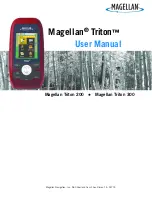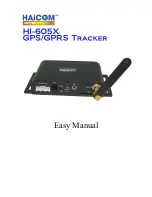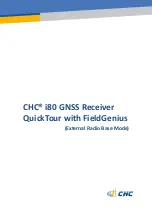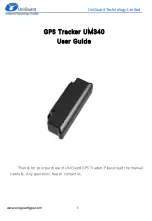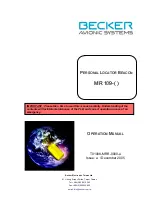
WTS
–
Positioning
Solutions
AB
info@traxfamily.
com
Corporate
Identity
No:
Wallingatan
18
www.traxfamily.com
556498
‐
1800
111
24
STOCKHOLM
Sweden
Choking
hazards.
Trax
is
a
small
self
‐
contained
unit
and
may
present
a
choking
hazard
to
children
or
pets
if
not
used
properly.
Take
care
when
using
Trax
and
its
accessories
on
children
and
pets.
Using
connectors
and
ports.
Only
the
enclosed
USB
cable
should
be
used
to
charge
your
Trax,
Never
force
a
connector
into
a
port.
Make
sure
that
the
connector
matches
the
port
and
that
you
have
positioned
the
connector
correctly
in
relation
to
the
port.
Keeping
Trax
within
acceptable
temperatures.
Trax
is
designed
to
be
operated
in
temperatures
between
‐
10°C
and
55°C
(14°F
to
131°F).
Low
or
high
temperature
conditions
may
temporarily
shorten
battery
life
or
cause
the
device
to
temporarily
stop
working
properly.
When
Trax
is
in
use
or
the
battery
is
charging,
it
is
normal
for
the
device
to
get
warm.
Radio
frequency
interference.
Radio
‐
frequency
emissions
from
electronic
equipment
can
negatively
affect
the
operation
of
other
electronic
equipment,
causing
them
to
malfunction.
Therefore,
please
take
the
following
precautions:
•
Aircraft.
Use
of
a
Trax
Product
may
be
prohibited
while
traveling
in
aircraft.
•
Vehicles
.
Radio
frequency
emissions
from
Trax
Products
may
affect
electronic
systems
in
motor
vehicles.
•
Driving.
Before
using
Trax,
or
using
your
mobile
phone
to
access
its
services,
safely
park
your
vehicle.
•
Pacemakers.
Persons
with
pacemakers
should
always
keep
Trax
more
than
15
cm
(6
inches)
from
the
pacemaker.
If
you
have
any
reason
to
suspect
that
interference
is
taking
place,
remove
Trax
immediately.
•
Hearing
aids.
Trax
Products
may
interfere
with
hearing
aids.
•
Hospitals
and
health
care
facilities.
Remove
the
GPS
tracker
(Trax)
when
staff
or
posted
signs
instruct
you
to
do
so.
Exposure
to
radio
frequency
energy.
Trax
contains
radio
transmitters
and
receivers.
Trax
receives
and
sends
out
radio
frequency
(RF)
energy
through
its
antennas.
Trax
is
based
in
part
on
proximity
to
the
wireless
network.
In
general,
the
closer
you
are
to
a
cellular
base
station,
the
lower
the
cellular
transmitting
power
level.
Any
changes
or
modifications
not
expressly
approved
by
the
party
responsible
for
compliance
could
void
the
user’s
authority
to
operate
the
equipment.
This
device
complies
with
Part
15
of
the
FCC
Rules,
Operation
is
subject
to
the
following
two
conditions:
(1)
This
device
may
not
cause
harmful
interference,
and
(2)
This
device
must
accept
any
interference
received,
including
interference
that
may
cause
undesired
operation.
Note:
This
equipment
has
been
tested
and
found
to
comply
with
the
limits
for
a
Class
B
digital
device,
pursuant
to
part
15
of
the
FCC
Rules.
These
limits
are
designed
to
provide
reasonable
protection
against
harmful
interference
in
a
residential
installation.
This
equipment
generates,
uses
and
can
radiate
radio
frequency
energy
and,
if
not
installed
and
used
in
accordance
with
the
instructions,
may
cause
harmful
interference
to
radio
communications.
However,
there
is
no
guarantee
that
interference
will
not
occur
in
a
particular
installation.
If
this
equipment
does
cause
harmful
interference
to
radio
or
television
reception,
which
can
be
determined
by
turning
the
equipment
off
and
on,
the
user
is
encouraged
to
try
to
correct
the
interference
by
one
or
more
of
the
following
measures:










